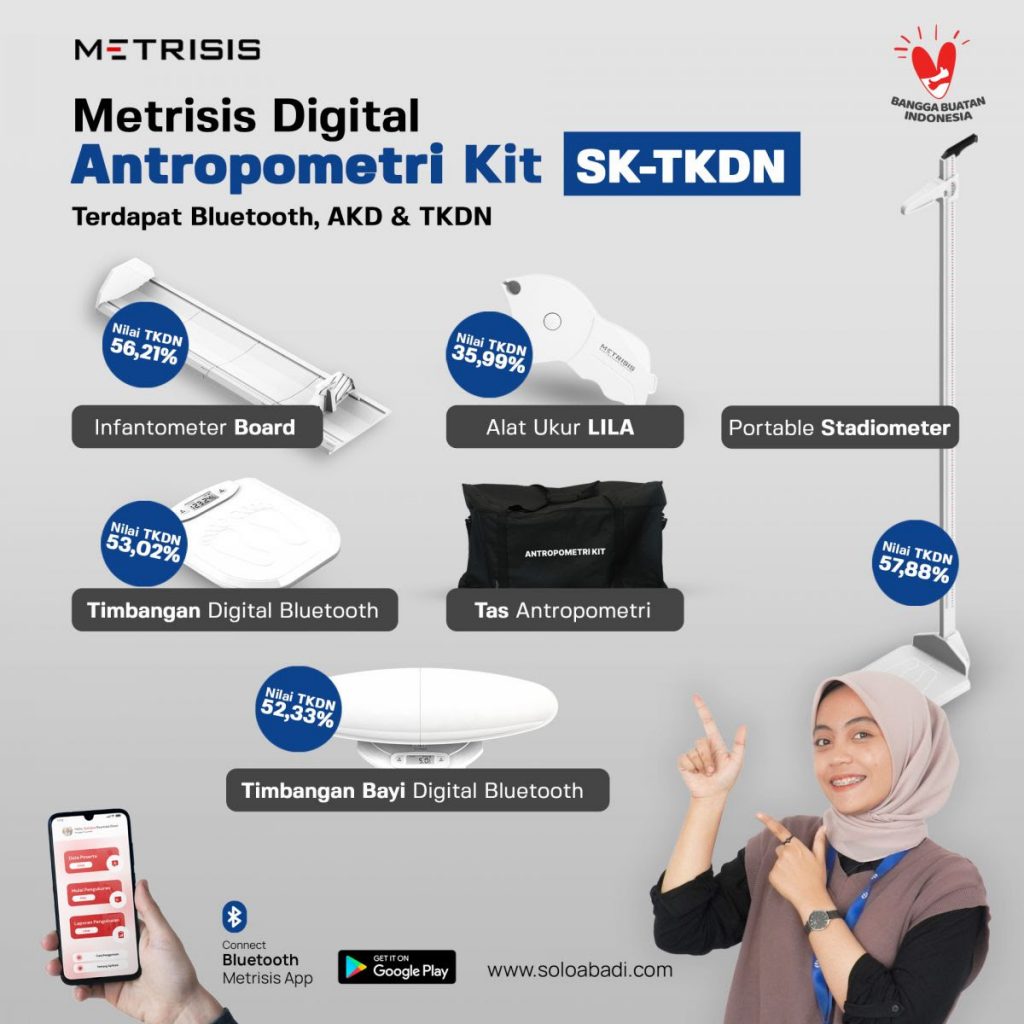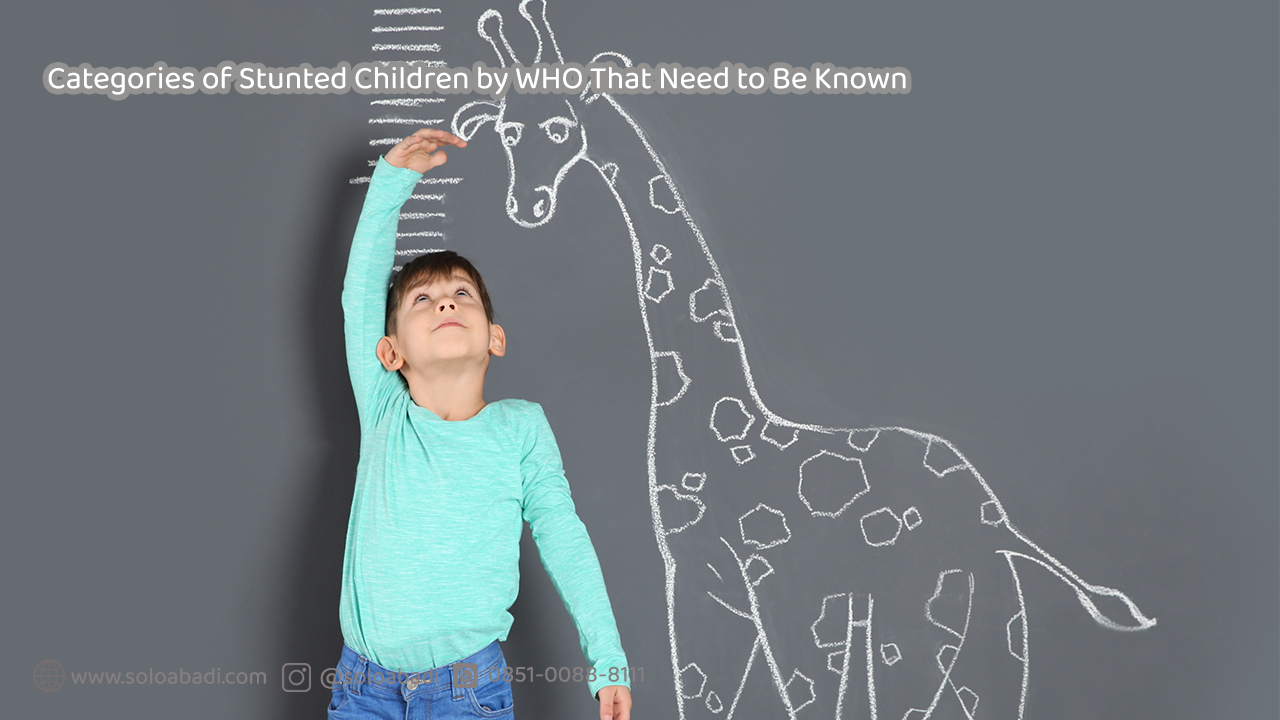What are the categories of stunted children? Stunting is a condition of failure to grow from the first day of life 0-1000 days due to malnutrition during the growth period. As a result, children’s development is delayed compared to their peers.
The Ministry of Health classifies stunting into 2, namely the Z-Score value is less than -2.00 SD/standard deviation (stunted) and less than -3.00 SD (severely stunted). Meanwhile, WHO categorizes stunting into 4, namely early onset persistent, early onset recovered, late-onset persistent and late-onset recovered. So what is the stunting category? And how is the explanation? Check out the detailed information in the following article!

Categories of Stunted Children
How to know if a child is stunted? In Indonesia, stunting can be controlled using the growth curve that is a reference from WHO and the curve of the Center for Disease Control and Prevention (CDC 2000). References for the use of this indicator include measurements of height, weight, and the circumference of the upper arm and head.
The main cause of stunting is nutritional problems that interfere with the growth of children up to the age of 5 years. The following is a classification of nutritional status based on Z-Score:

In addition to the nutritional condition of children that can be seen in children with indications of stunting, there are several characteristics of children who experience stunting, including:
- Growth delay and puberty
- Lack of attention and learning memory
- Becoming quiet and having difficulty making eye contact at the age of 9-10 years
- The face looks younger than his age
- Easily experience infectious diseases
Meanwhile, stunting can be categorized based on its cognitive ability. According to The Wechsler Preschool Primary Scales of Intelligence (WPPSI), there are 4 categories of stunting, namely:
1. Stunting early-onset persistent
The first category of stunted children is early onset persistent. This category occurs in children aged 1-6 months with an age span of 60 months or at the age of 5 years. This condition is caused by economic factors, poor sanitation, and lack of physical stimulation.
2. Stunting early onset recovered
This second category is early onset recovered which occurs in children aged 1-6 months to 5 years. The cause is the growth delay experienced by children at the age of 2 years which continues until the age of 5 years. As a result of slow handling and intervention, stunting conditions in children are caused.
3. Stunting late-onset persistent
Third, there is a category with persistent late-onset conditions that occur at the age of 7-24 months to 5 years. The cause is the lack of exclusive breastfeeding and lack of complementary foods. This results in children being the slowest in cognitive growth and children are easily exposed to viruses.
4. Stunting late onset only
The next category is late onset only which occurs at the age of 7-24 months. The cause of the stunting category at this stage is the lack of adequate nutrition for children up to 2 years old. As a result, children are susceptible to infections and lose weight.

Read More: When is Child Considered Stunting? Check These Symptoms!
However, the Ministry of Health categorizes children with stunting into the following:
1. Short toddler stunting category (stunted)
The stunting category with a short toddler condition known as stunted. This condition is said if the toddler is at a z-score of less than -2SD. This indicator is based on a nutritional status threshold based on height and length.
2. The category of stunting for toddlers is very short (severely stunted)
The category of severely stunted is a condition in 2-year-old toddlers who are grouped in the lack of z-score less than -3 elementary school.
Stunting Detection Tool, Prevent Children from Entering the Stunting Category
Categorizing stunted children or not can be known with anthropometric tools. Anthropometry itself is a measurement of the dimensions of the human body which includes measurements of height and length, weight, to measurements of upper arm and head circumference.

Anthropometric measurements can be carried out from toddlers aged 0-2 years which can be done at Integrated Healthcare Center, health centers, and child health clinics. The following are recommendations for an accurate anthropometric kit measurement tool that has been verified by the Ministry of Health since 2022, namely the Metrisis Anthropometric Kit.
One package of anthropometric kits consists of a stadiometer, infantometer board, digital weight scale, digital baby scale, and LILA meter. Domestically made products that have been used in more than 1000 health institutions in Indonesia. Get a special price quote for the Anthropometry Kit package with us via WhatsApp Admin. Also available in the government E-Catalog. Stay up to date with our updates on www.soloabadi.com.


